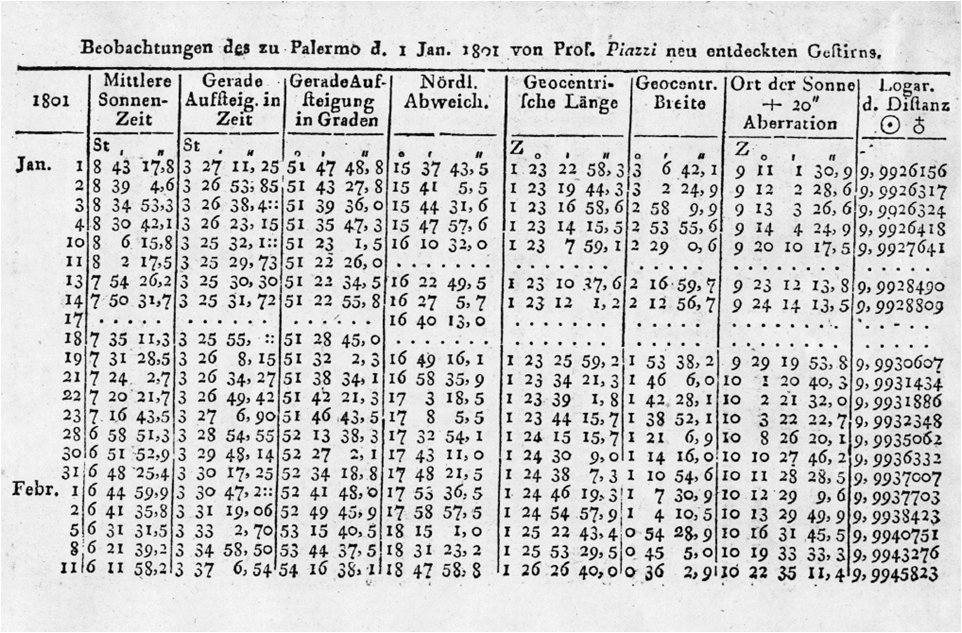About:
How can we know accurately the orbit of a new planetary object detected in the sky from just a few observations? Is it possible to recover this object, after it is lost in sunlight? These were the challenges that astronomers had to face whenCeres, the first asteroid (now classified as a dwarf planet), was discovered by Giuseppe Piazzi in 1801 at Palermo Observatory. Thanks to his extraordinary mathematical skills, it was Carl Friedrich Gauss (1777-1855), one of the greatest mathematicians of all time, who solved the problem.
The discovery of Ceres is only one example of the importance of developing mathematical methods to extract scientific information from astronomical observations and fit them to theories. Through the discovery of Neptune, the anomalies in the perihelion of Mercury and many other cases, the importance of data science in astronomy will be described from a historical perspective mainly focused on 19th century. We will also mention briefly applications of mathematics to the development of new technologies for modern telescopes.
Ileana Chinnici is historian of astronomy at the INAF - Palermo Astronomical Observatory; her main research field is history of 19th-century astronomy and astrophysics.


